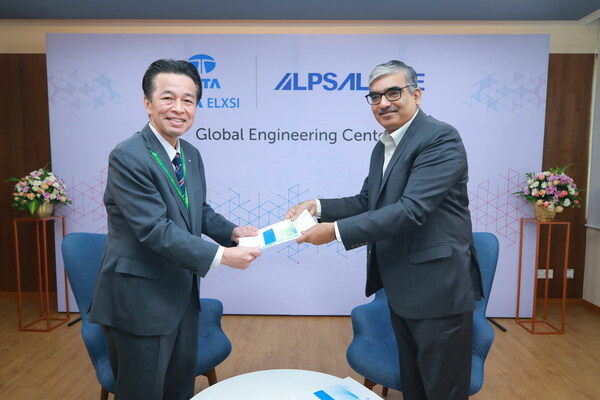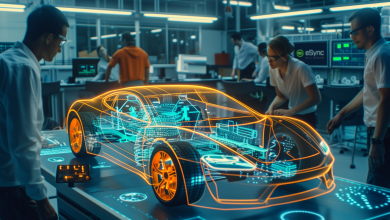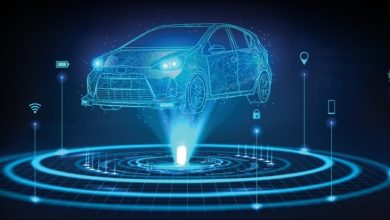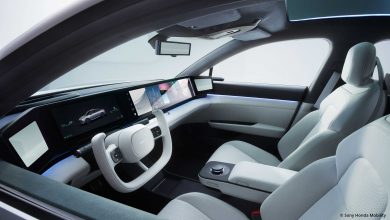Bosch to showcase software-defined mobility at IAA Mobility 2023
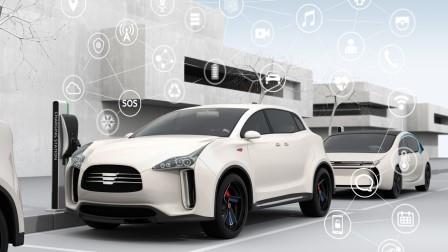
Stuttgart and Munich, Germany – WEBWIRE – Saturday, August 26, 2023. — Vehicles are an integral part of today’s digital world. In the future, new functions for connectivity, automation, personalization, and highly efficient powertrains will increasingly be delivered by software and smart hardware. Bosch is equally at home in both domains: from brakes, steering systems, and electric powertrains to sensors, vehicle computers, and software solutions, the supplier of technology and services develops and manufactures the key components of modern vehicles under one roof. Bosch will be presenting its latest fascinating solutions for safe and sustainable mobility at IAA Mobility 2023 in Munich.
Powerful hardware
The mobility sector is moving towards powerful vehicle parts compatible with software from diverse vendors, marking a significant trend. Bosch offers hardware whose intelligence can be embedded both in the components themselves and, for example, in central vehicle computers.
Invisible, yet everywhere:
Semiconductors are an essential part of technical devices: as one of the top ten semiconductor manufacturers in the automotive segment, Bosch is continually investing in research and development and in expanding its worldwide semiconductor manufacturing network. Its portfolio includes integrated circuits, MEMS (microelectromechanical systems) sensors, power semiconductors, and power modules. For automakers who define their own electrical/electronic (E/E) vehicle architectures, Bosch offers the ability to precisely tailor the functional scope of semiconductors to this architecture.
Sensors for precise surround sensing:
Surround sensing is indispensable for automated driving functions. Bosch’s new radar sensors enable assisted and automated driving functions at SAE Levels 0 to 3. For the sixth generation of these radar sensors, Bosch has incorporated artificial intelligence. This new generation performs better at measuring distance, high speeds, and angular resolution; as a result, objects such as motorcycles can also be reliably detected across the entire field of view. Bosch will also be presenting a new generation of ultrasonic sensors at the IAA. Thanks to AI-based height classification, these sensors offer more robust detection capabilities. This allows them, for example, to estimate the approximate height of an obstacle.
Moreover, tripling of the echoes makes these sensors even more sensitive, enabling them to achieve quick and reliable detection of pedestrians and low-reflection objects, for example. The portfolio is rounded off with new camera housings. Image analysis now occurs in central vehicle computers like Bosch’s ADAS Integration Platform, not within the camera. Available in 3- and 8-megapixel variants, plus the option of a 12-megapixel version for Level 4 applications, the camera housings are at the cutting edge of image sensor technology.
Next-generation vehicle computers:
Bosch offers modular and scalable components for customer-specific E/E architectures with individually configurable vehicle computers. The vehicle integration platform is the enabler of software-defined vehicles with centralized and zonal E/E architectures. The idea is to move the vehicle’s application software into central vehicle computers. This way, the vehicle integration platform enables functional integration across all domains, such as body, motion, and comfort. Over-the-air updates ensure that vehicle software is always kept up-to-date.
The ADAS integration platform is a Bosch vehicle computer for the domain of advanced driver assistance systems. This powerful computer can deliver assisted and automated driving functions and parking at SAE Levels 0 to 4. Thanks to its modular and scalable architecture, the platform can be tailored to the specific requirements of each automaker – including the flexible integration of third-party software, for example. The cockpit integration platform combines the computing tasks of the infotainment and instrumentation domains in a single computer. Depending on performance and functional safety requirements, additional functions can be integrated into the computer from other domains, such as climate control, connectivity, driver assistance functions, and camera-based applications. These applications include driver and occupant monitoring, surround view, and dashcam recording.
The motion integration platform focuses on safety-related application software for the powertrain, chassis, and steering. To complement this portfolio, Bosch offers its zone ECUs, which act as a link between vehicle computers and distributed ECUs, sensors, and actuators.
Reliable energy supply:
The Bosch powernet guardian ensures that safety-related functions in the vehicle are supplied with power at all times. In the event of a fault, an electronic isolating switch separates the safety-relevant electrical system from the rest of the (standard) consumers, such as seat heating and window lifters. With a high depth of predictive diagnostics, the powernet guardian promptly detects safety-critical supply gaps. It isolates faulty paths and safeguards the energy supply with hardware redundancies. This functionality will play a central role in future E/E architectures and for automated driving.
Next steps in electromobility:
Bosch is continuing to expand its portfolio of electromobility solutions. For the first time, it will be manufacturing an electric motor and inverter using 800-volt technology. The motor provides enhanced power and torque with higher density; the inverter utilizes SiC power semiconductors for up to 99% efficiency. In addition, a charger-converter, which combines a charger and a high-voltage DC/DC converter in a single housing, will soon go into production. This solution will save space and cut costs.
Setting the right temperature in electric cars and hybrids:
Bosch uses intelligent thermal management to increase the range of electric and hybrid vehicles. Optimal coordination of the refrigerant circuit and the cooling circuit enables precise distribution of heat and cold, improves the efficiency of the battery, and ensures that all components are working within their optimum temperature range. For this purpose, Bosch is developing flexible thermal units as pre-integrated solutions. With fewer parts, assembly steps, and cables, these reduce installation space and weight. Passengers also benefit: the thermal management system delivers a pleasant temperature inside the vehicle. The global brushless blower plays an active part in increasing climate comfort in the passenger compartment. It adjusts airflow based on outside temperature and occupants’ needs, providing cooling or heating inside the vehicle accordingly. Smart motor topology enables a compact design that significantly reduces weight, increases power density, and reduces noise emissions.
The future of steering:
Steer-by-wire systems eliminate the physical connection between a vehicle’s steering wheel and its wheels. This opens up new possibilities for redesigning the vehicle interior. Especially in an age of automated driving, this technology enables new cockpit concepts by allowing the steering wheel to be lowered or stowed away. In addition, steer-by-wire applications also provide the basis for new safety features in vehicle dynamics control. Bosch is systematically driving forward the development of this technology and wants to bring steer-by-wire systems to the market on a commercial scale by the middle of the decade.
Enhanced brake systems:
The latest generation of Bosch’s electronic stability program (ESP®) is a key component of modern brake systems. Combined with the electromechanical brake booster, iBooster ensures the requisite brake system redundancy during automated driving. It provides a high degree of brake pressure build-up dynamics for automatic emergency braking. Additionally, iBooster improves the efficiency of braking energy recuperation in hybrid and electric vehicles. Vehicle dynamics control 2.0 is the new core control system of ESP®. Based on sensor information, it anticipates vehicle behavior and intervenes proactively.
Enhanced performance, compact size:
Performance Line SX is a compact drive unit from Bosch eBike Systems that allows e-cyclists to make their way through city traffic dynamically and efficiently. The new drive unit delivers a maximum torque of 55 newton meters (Nm) and a power-to-weight ratio of up to 300 watts per kilogram (W/kg). When riding in a sporty style, it provides a level of support disproportional to the cyclist’s performance while offering a natural riding sensation. Performance Line SX blends in with the sleek look of modern urban eBikes, so the result looks similar to a conventional bike. And its weight of around two kilograms offers real benefits when it comes to quickly getting from A to B or occasionally carrying the eBike up the stairs.
Smart software
New functions for greater efficiency, safety, and comfort are increasingly being introduced into vehicles through smart software. This trend affects not only product development and product use, but also the way in which people experience mobility. It also enables new business and collaboration models.
Surround sensing as a standalone software module:
Video-based surround sensing plays a key role on the journey from assisted to automated driving. Various camera sensors capture images of the vehicle’s surroundings and process this data in a way that allows it to be used for more advanced driver assistance and automated driving and parking functions. Bosch video perception is a purely software solution that can be deployed on various systems-on-a-chip (SoCs).
Fast and reliable development of automated driving:
Bosch’s subsidiary ETAS introduces unique middleware, connecting the OS and software apps within the vehicle for enhanced functionality. This solution allows software functions for driver assistance and automated driving to be continuously improved. It enables instant communication between software applications at a bandwidth of more than 10 gigabytes per second (GB/s) without compromising security. Deterministic behavior allows many development steps to be performed virtually with recorded real data. Reproducible simulation-based validation makes it possible to reduce the number of costly test-drive kilometers in real traffic conditions.
Boosting safety with assistance systems:
Bosch driving assist makes driving safer and more comfortable. By putting together their desired package of functions from a modular system of longitudinal and lateral guidance, automatic lane change, and emergency braking, vehicle manufacturers can implement SAE Level 2 automated driving functions. The most advanced variant, Bosch driving assist premium, uses a 360-degree camera belt to expand the application of automated driving functions from the freeway to urban and rural traffic situations.
Vehicle motion und vehicle dynamics:
Bosch vehicle motion management controls and coordinates driving behavior by optimizing the interaction between braking, steering, chassis, and powertrain systems. The latest Bosch systems offer vehicle dynamics control 2.0, managing traction, antilock braking, and overall vehicle dynamics with precision. This function anticipates likely vehicle behavior and intervenes proactively. The result is a driving experience that is very safe, agile, and relaxed.
Development of connected vehicle systems:
PANTARIS is a cloud-based platform that offers essential services and tools for the efficient development and scalable operation of software for vehicle systems. As well as ensuring the worldwide availability of mobility services, PANTARIS also includes a developer portal for managing vehicles and services. PANTARIS and the applications it offers are based on cloud-independent technology, making them compatible with all public cloud providers.
PANTARIS Connect provides the basic services for vehicle connectivity and operation over the entire vehicle lifecycle. Moreover, PANTARIS Creator provides easy access to software-as-a-service (SaaS) tools for the secure development and operation of cloud services. PANTARIS Workspace offers a central point of access for developers to book and manage services, making it quick and easy to implement specific applications.
Energy management for electric vehicles:
Bosch’s connected vehicle energy management system brings together an electric vehicle’s thermal management, powertrain, and electrical system. This ensures the optimum distribution of energy at the vehicle level, thereby reducing energy consumption and increasing comfort. It also paves the way for new functions such as safe home mode. It aids the vehicle to reach its destination using remaining battery by curbing power usage in comfort systems like heating.
Digital world on two wheels:
The eBike Flow app offers digital assistance for e-bikers, integrating their eBikes into the connected world for on-the-go support. Increasing connectivity between key components with digital features allows bikers to tailor their eBike experience to their personal needs. over-the-air updates further enhance the eBike riding experience.
Robust services
Bosch is taking software-defined mobility a step further and launching new services to enhance customer safety, security, and convenience. This is also giving rise to new business models that Bosch is systematically advancing.
Better range forecasts and suitable charge points:
Important information for drivers of electric vehicles includes the available range of their vehicle and personalized charge point recommendations. To improve the accuracy of this information, Bosch supplements its route, topography, and consumption data with the latest updates on weather and traffic flow as well as information on which electrically powered comfort items – such as climate control or seat heating – are currently in use. Cloud-based algorithms calculate the actual range, select a suitable charge spot, and visualize this information in the navigation map.
Connected map services for automated driving:
Connected map services can play a major part in making mobility safe and convenient. Swarm data and infrastructure details blend to form a virtual sensor for driver assistance, enhancing safety through crowdsourcing insights. The service provides real-time information about road conditions and risks such as aquaplaning, ice, and snow. This enables automated vehicles to correctly anticipate conditions, adapt their driving behavior accordingly, choose a different route, or ask the driver to take control. Thanks to this service, Bosch is able to improve the availability of driver assistance systems and enable new functions.
Driverless parking and maneuvering:
With automated valet parking, Bosch has brought the world’s first automated and driverless SAE Level 4 parking function to production models. Intelligent infrastructure guides the vehicle safely through the parking garage to a free parking spot. Furthermore, this improves the parking experience for drivers, helps parking garage operators achieve higher capacity utilization and other benefits. It also enables automakers to offer new software-based services to their customers. Based on this technology, Bosch is now bringing the driverless maneuvering of vehicles to the realm of automotive production with automated vehicle maneuvering.
Bosch equips automakers’ plants with an intelligent lidar-sensor infrastructure, which it supplements, where required, with Bosch stereo cameras. The driverless maneuvering service boosts efficiency and increases safety: automakers can finally get to grips with challenges such as the tight maneuvering of vehicles, downtimes in production due to absent drivers, accidents or damage caused by collisions, and a lack of information on where vehicles are located in the plant.
Efficiency gains for fleet operators:
Bosch helps mobility service providers run their fleets more efficiently. Available in three different service levels, RideCare connected rent provides fleet operators with information on the condition of their vehicles. With the end of rental report service module, mobility providers receive an automated report on the vehicle’s condition at the end of the rental period. Moreover, this report includes the battery level, kilometers driven, and any new damage to the vehicle.
Rental car companies benefit from more efficient processes and lower operating costs thanks to reduced vehicle downtime and clear allocation of vehicle damage; end users benefit from greater convenience and transparency. In addition, RideCare connected rent uses the fleet utilization planner to provide information before, during, and after the rental period. This includes real-time notifications of vehicle condition, critical error messages, and missed service intervals. RideCare connected rent also offers support in planning the efficient charging of electric vehicles through the charging planner. Bosch plans to equip more than two million vehicles with this technology by 2030.
Interior sensing:
Bosch’s interior monitoring system combines various technologies to enable the reliable detection of vehicle occupants, especially children. Critical situations such as distraction, drowsiness, or an unfastened seat belt can be detected quickly, and the driver warned accordingly. The system is based on the detection of movements and vital signs, which can also be indicators of the vehicle occupants’ state of health. The combination of interior monitoring cameras with the highly sensitive cabin sensing radar – or alternatively with the ultra-wideband technology also used for Perfectly Keyless – enhances and expands the capabilities of the interior sensing system. This increases safety for everyone on the road.

